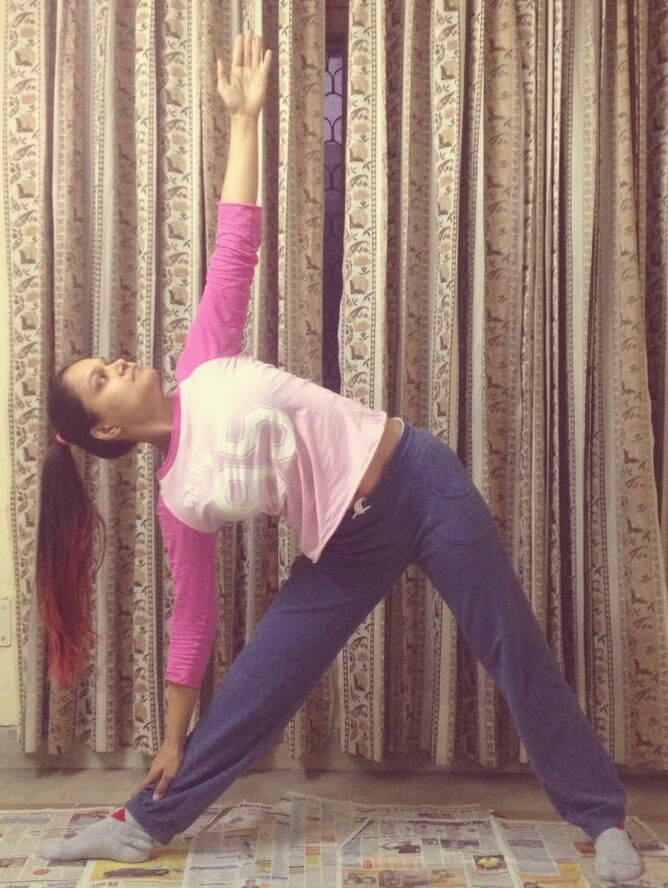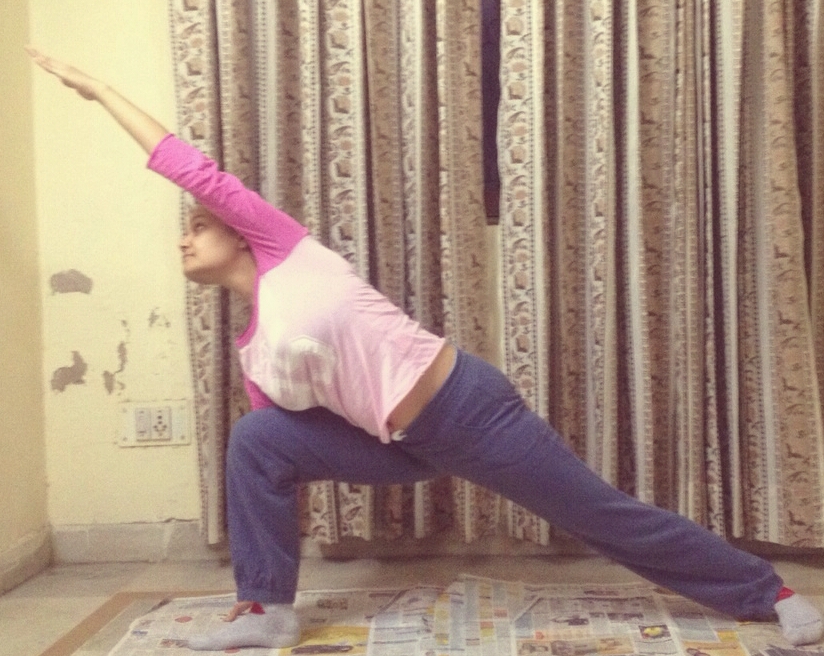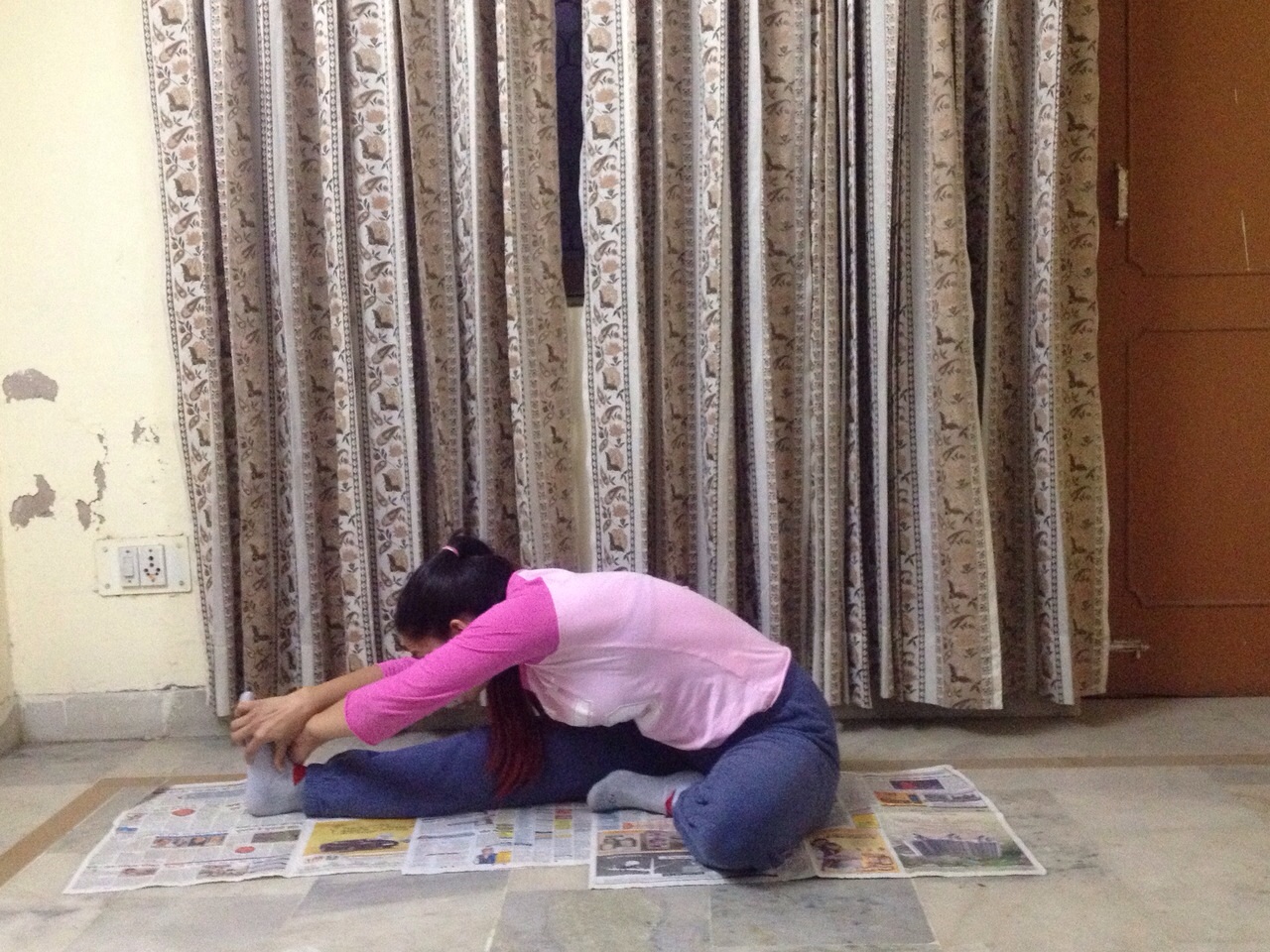Every Thursday this month I would catch a bus to a rather far away part of town to meet a group of about 10 people for a session of Acro Yoga. The group consists of former yogis, graphic designers, sound artists, an acrobat…all coming together…for different reasons. I would say its for our shared love of yoga, but there are many in the group who don’t practice yoga in the conventional sense. But I digress. You see, I wanted to use this vacation to explore and expand my personal practice. So I decided to explore the yoga scene in Den Haag. You can watch what I feel about Bikram Yoga here.
I’m actually enjoying the Acro Yoga meetings. The first thing I noticed was that everyone was at different stages of flexibility and physical fitness. We were all different as people as well. Some were students, some were senior citizens etc. However, all of us had to learn to adapt with each other and work together. We did not choose our partners on the basis of skill or ability or weight. In fact, we didn’t choose partners, we randomly divided ourselves into teams and made the most of it. Lesson #1: In life you don’t get to choose the cards you’re dealt. But you can choose to make the most of the cards.
Next I noticed that regardless of how much you could balance or how strong you yourself are, you would only be able to do the poses only if the other person would also cooperate. So me having strong legs doesn’t necessarily mean that the person I would push up would stay up. Staying up would require the other person to understand the mechanics of the posture and trust you enough to relax into the pose. Lesson #2: In life you need to do your best and hope that your teammates also do their best. That’s the winning formula.
And perhaps the most important lesson I learned is about balance. Sthiram sukham asanam is the first Yoga Sutra I learned but I’ve finally understood it. Patanjali basically says that a posture is a yogasana only when you find stability and peace in it. In Acro Yoga, the final posture is difficult to hold if you are tense. Being tense makes it difficult for your partner as well. There is a perceptible ease in a posture the moment both partners relax, and that’s when the posture becomes easy, stable and peaceful. Lesson #3: Relax in the present moment and circumstances. Only then you will find balance.
I’m off for a while next week so I will miss my Acro Yoga classes. But I will get back to them as soon as I can.
And yes, I highly recommend Acro Yoga! Below are a few snapshots from our last class.
![2015-02-20 08.15.17[1]](https://yogawithpragya.com/wp-content/uploads/2015/02/2015-02-20-08-15-171-1.jpg?w=169)
It’s all about working together. John has many many years as an acrobat and without his cooperation I won’t be able to hold him up.
![20150219_202140[1]](https://yogawithpragya.com/wp-content/uploads/2015/02/20150219_2021401-1.jpg?w=300)
One of the first moves we learned. I’m getting more and more comfortable in this pose, yet I still need to be prompted to try and get my body in a straight line.
![20150219_202224[1]](https://yogawithpragya.com/wp-content/uploads/2015/02/20150219_2022241-1.jpg?w=169)
We always had ‘safeties’. Like Lex here, there should always be people around to catch you in case you fall.
![20150219_202236[1]](https://yogawithpragya.com/wp-content/uploads/2015/02/20150219_2022361-1.jpg?w=169)
John could actually feel my comfort level in this pose. When I was comfortable, he would have an easier time doing his bit.
![20150219_203128[1]](https://yogawithpragya.com/wp-content/uploads/2015/02/20150219_2031281-1.jpg?w=169)
![20150219_203149[1]](https://yogawithpragya.com/wp-content/uploads/2015/02/20150219_2031491-1.jpg?w=300)
![20150219_203230[1]](https://yogawithpragya.com/wp-content/uploads/2015/02/20150219_2032301-1.jpg?w=169)
![20150219_202318[1]](https://yogawithpragya.com/wp-content/uploads/2015/02/20150219_2023181-1.jpg?w=169)
![20150219_202440[1]](https://yogawithpragya.com/wp-content/uploads/2015/02/20150219_2024401-1.jpg?w=300)
![20150219_202447[1]](https://yogawithpragya.com/wp-content/uploads/2015/02/20150219_2024471-1.jpg?w=169)
![20150219_202454[1]](https://yogawithpragya.com/wp-content/uploads/2015/02/20150219_2024541-1.jpg?w=169)
![20150219_202825[1]](https://yogawithpragya.com/wp-content/uploads/2015/02/20150219_2028251-1.jpg?w=168)
![20150219_212658[1]](https://yogawithpragya.com/wp-content/uploads/2015/02/20150219_2126581-1.jpg?w=300)
![20150218_135328[1]](https://yogawithpragya.com/wp-content/uploads/2015/02/20150218_1353281-1.jpg?w=168)
![IMG-20150209-WA0004[1]](https://yogawithpragya.com/wp-content/uploads/2015/02/img-20150209-wa00041-1.jpg?w=300)
![2015-02-15 14.42.00[1]](https://yogawithpragya.com/wp-content/uploads/2015/02/2015-02-15-14-42-001-2.jpg?w=169)
![Photo Collage Maker_0Dymy2[1]](https://yogawithpragya.com/wp-content/uploads/2015/02/photo-collage-maker_0dymy21-1.png?w=300)
![IMG-20150209-WA0009[1]](https://yogawithpragya.com/wp-content/uploads/2015/02/img-20150209-wa00091-1.jpg?w=300)
![2015-02-15 15.11.43[1]](https://yogawithpragya.com/wp-content/uploads/2015/02/2015-02-15-15-11-431-1.jpg?w=300)
![Photo Collage Maker_UYopz9[1]](https://yogawithpragya.com/wp-content/uploads/2015/02/photo-collage-maker_uyopz91-1.png?w=300)
![2015-02-15 15.02.33[1]](https://yogawithpragya.com/wp-content/uploads/2015/02/2015-02-15-15-02-331-1.jpg?w=169)
![IMG-20150209-WA0016[1]](https://yogawithpragya.com/wp-content/uploads/2015/02/img-20150209-wa00161-1.jpg?w=300)
![IMG-20150209-WA0003[1]](https://yogawithpragya.com/wp-content/uploads/2015/02/img-20150209-wa00031-1.jpg?w=300)
![IMG-20150209-WA0005[1]](https://yogawithpragya.com/wp-content/uploads/2015/02/img-20150209-wa00051-1.jpg?w=300)
![2015-02-03 13.47.14[1]](https://yogawithpragya.com/wp-content/uploads/2015/02/2015-02-03-13-47-141-1.jpg?w=300)
![2015-02-03 13.36.53[1]](https://yogawithpragya.com/wp-content/uploads/2015/02/2015-02-03-13-36-531-1.jpg?w=300)
![2015-02-03 13.38.31[1]](https://yogawithpragya.com/wp-content/uploads/2015/02/2015-02-03-13-38-311-1.jpg?w=300)
![2015-02-03 13.40.17[1]](https://yogawithpragya.com/wp-content/uploads/2015/02/2015-02-03-13-40-171-1.jpg?w=300)
![2015-02-03 13.45.16[1]](https://yogawithpragya.com/wp-content/uploads/2015/02/2015-02-03-13-45-161-1.jpg?w=300)
![2015-02-03 13.43.55[1]](https://yogawithpragya.com/wp-content/uploads/2015/02/2015-02-03-13-43-551-1.jpg?w=300)



 There should be a uniform stretch along the side of your body. Make sure the side of your body doesn’t rest on the thigh. To ensure this you may want to slightly lift your hand off of the floor ensuring your core and your legs have to support your body weight. Look up at your finger tips. Relax your neck and face.
There should be a uniform stretch along the side of your body. Make sure the side of your body doesn’t rest on the thigh. To ensure this you may want to slightly lift your hand off of the floor ensuring your core and your legs have to support your body weight. Look up at your finger tips. Relax your neck and face. Do this pose in the end to stretch the back of your legs. However, in this pose, as in all other poses, pay attention to your core. You want to make sure that you pull your stomach in and extend forward keeping your back straight. This will ensure a deeper stretch. Aim to get your chin to the knee instead of forehead to knee. Also, make sure you cross your arms when you reach forward. This ensures that the stretch on your back is even.
Do this pose in the end to stretch the back of your legs. However, in this pose, as in all other poses, pay attention to your core. You want to make sure that you pull your stomach in and extend forward keeping your back straight. This will ensure a deeper stretch. Aim to get your chin to the knee instead of forehead to knee. Also, make sure you cross your arms when you reach forward. This ensures that the stretch on your back is even.